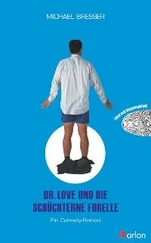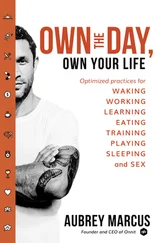Several historical cases of agalmatophilia have been documented. Clisyphus evidently “violated the statue of a goddess in the Temple of Samos, after having placed a piece of meat on a certain part. In 1877 “a gardener fell in love with a statue of the Venus of Milo and was discovered attempting coitus with it” (Psychopathia Sexualis, by Richard Von Krafft-Ebing, p. 351).
The practice of having sex with a statue was common among worshippers of the god Priapus where virgins were to first be penetrated by him. This practice was later relegated to a priest or magistrate. However, even in our own century, young Indian virgins have been known to use sacred phalluses to break their hymens before marriage.

A few ancient statues had removable penises to facilitate their use as dildos. Several statues of Catholic fertility saints, including among others St. Foutin, St. Guerlichon, St. Gilles, and St. Rene were equipped with a large phallus. The Protestants demolished a church at Orange in 1562 to find a large wooden phallus that had been covered with leather and 23 years later at Embrun found people still worshipping the statue of St. Foutin by pouring wine onto his penis (Sex in History, by G. Rattray Taylor, pp. 269-270).
Today some men still prefer the multidimensional aspect of these forms to two-dimensional printed erotica. One case was reported of a man who as a 12 year old boy became enamored of a life-size statue at a museum when his mother called it obscene. Later, he spotted two small statues in a store window and purchased them. He began using them while masturbating and at the age of 34 had not broken the habit even though he was married. Another case was that of a window dresser who felt compelled to masturbate whenever he saw a nude manikin. His first sexual experience was at the age of 14 when he was forced to perform fellatio on his supervisor as they sat on manikins. He developed the desire to not only rub against a manikin to masturbate but to have another man watch (The Sexual Fetish, by Robert Tralins, pp. 27, 46).
A few people in today’s S/M community use a psychological form of restraint where the person, like a statue, is not to move or respond to the fondling actions of their partner. And people everywhere seem fascinated with the royal guards at Buckingham Palace for their statue-like imperviousness.
(See also AMAUROPHILIA, ANDROIDISM, EROTOMANIA, FETISHES. FORNICATORY DOLLS, FROTTAGE, HEIROPHILIA, PEDIOPHILIA, PHALLOPHILIA and PORNOGRAPHY)
AGONOPHILIA(Pseudo-rape) Agonophilia ( agon : struggle; philia : attachment to) refers to those who enjoy engaging in a pretended struggle before overpowering their sex partner.
(See also FANTASY PLAY, HARPAXOPHILIA, RAPE and WRESTLING)
AGORAPHILIA(Bushie mall—sex in open park) Agoraphilia ( agora : public place or assembly; philia : attraction to) refers to arousal from being in public places. People who desire to have sex in their back yard, a park, or other exposed area more than likely experience an unusual level of excitement from being outdoors. Agoraphiles experience sexual excitement from being outdoors just as agoraphobics experience fear.
One of the parks in San Francisco is a popular meeting place for gays who enjoy semi-public sex. The city tried to discourage their activity by having many of the shrubs cleared away. This simply resulted in the gays having sex without the protective covering of shrubs.
(See also ACROPHILIA, CLAUSTROPHILIA, EXHIBITIONISM, HODOPHILIA and PHOBOPHILIA)
AGREXOPHILIAAgrexophilia refers to those who become aroused by the knowledge that others may become aware of or hear their lovemaking. This can occur in hotels, group sex scenes, outdoors, or during visits with friends or relatives.
(See also DOGGING, ECOUTEURISM, EXHIBITIONISM, GROUP SEX and JACTITATION)
ALGOPHILIA(Doleros) Algophilia ( algo : pain; philia : attachment to) refers to sexual arousal gained by pain sensations. An algophile may be involved in S/M, however it seems the majority are not. Kinsey, in 1953, reported that about 50% of the people he surveyed admitted feeling sexual arousal from being bitten.
Primitive tribes, with their painful rituals for entering adulthood, valued their ability to endure pain as a prerequisite for marriage. The hostile and formidable environment hunters and gatherers lived in made this an essential qualification. Paul Bohannan, an anthropologist who wrote a paper on his field work in Nigeria between 1949 and 1953, reports a conversation he once had with a group of the Tiv tribe:
The aesthetic of beauty, insofar as it is represented by scarification and chipping of teeth, is involved with pain. I once asked a group of Tiv with whom I was discussing scarification whether it was not exceedingly painful. They turned on me as if I had missed the entire point—as, indeed, I had. ‘Of course,’ one of them said, ‘of course it is painful. What girl would look at a man if his scars had not cost him pain?’ The effort to ‘glow’ must be obvious; the effort to be dressed up must involve expense and trouble; scarification, one of the finest decorations, is paid for in pain. The pain is the proof positive that decoration is an unselfish act, and that it is done to give pleasure to others as well as oneself ( Marks of Civilization, Beauty and Scarification Amongst the Tiv , edited by Arnold Rubin, p. 82).
Tribes also used the pain of these scarifications to induce passion, and thus fertility, in much the same way as people today use biting.
The registration of pain is caused by the release of chemicals such as bradykinin, substance P, and prostaglandins and can be divided into two types, somatic and visceral. Somatic pain occurs most often in the muscles or skin. This pain is relatively mild compared to visceral pain which radiates from internal organs, causing nausea and weakness. The testes are part of the visceral system and injury to the testicles is traumatic.
We detect somatic pain by stimulation of the free nerve endings that lie near the surface of the skin. Once activated they transmit a signal to the brain, however, this is not a guarantee that the sensation will be perceived as painful. The message may be thwarted in several ways. First, certain nerves, the ones that transmit sensations of deep pressure, vibration, heat and cold, can override pain signals. This is why cold compresses, heating pads, and chemicals seem to help reduce discomfort. Second, a person’s mood affects this process and if he is anxious the pain will be sharper, whereas if he is sexually aroused, feels safe, in control, and submits to the partner, the sensation may even seem pleasant. In a study conducted by Drs. Miczek, Thompson, and Shuster it was discovered that in mice it was not the amount or length of painful stimulus that triggered the analgesic response but rather the mouse’s resignation to defeat (“Analgesia Following Defeat in an Aggressive Encounter: Development of Tolerance and Changes in Opioid Receptors,” Annals of the NY Academy of Sciences, Stress-Induced Analgesia, Vol. 467, p. 16). Extroverts are thought to require stronger tactile and mental stimulation than introverts and will not register pain as quickly. Once pain has been registered the body will try to adapt in various ways. Steady pain requires rapid firing by our nervous system and the body’s tendency is to adapt to constant stimulus by slowing this process, meaning that the intensity of pain dissipates accordingly. Once pain has been registered for 20–40 minutes the body will begin to produce opiate-like chemicals to reduce pain sensations.
Читать дальше













![Джейн Остин - Love and Freindship [sic]](/books/748741/dzhejn-ostin-love-and-freindship-sic-thumb.webp)